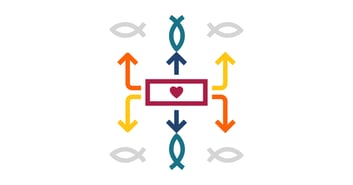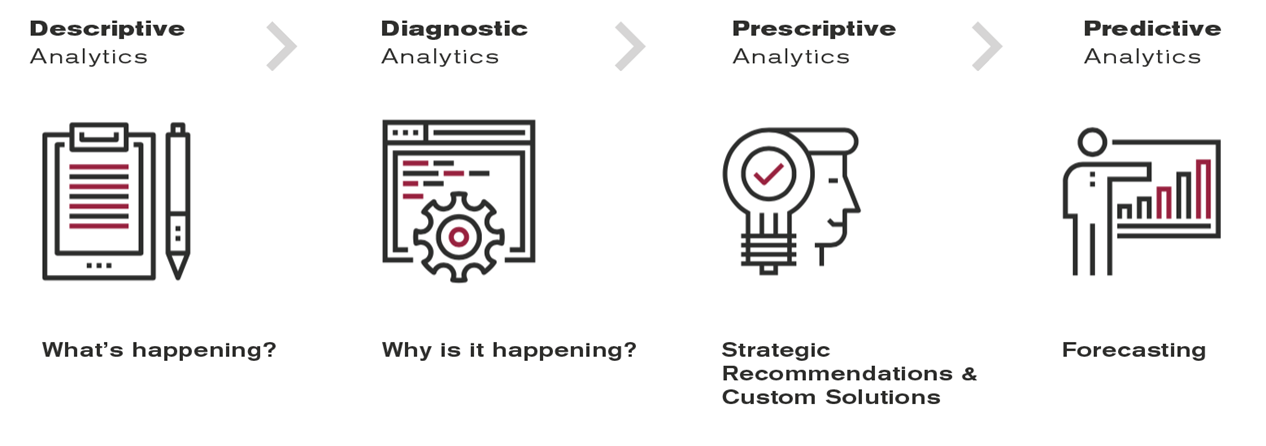 When Jesus first began his search for disciples, he met a pair of fishermen – Simon Peter and his brother Andrew (Matthew 4:18). Jesus called upon them to follow Him and learn how to “fish for people.”
When Jesus first began his search for disciples, he met a pair of fishermen – Simon Peter and his brother Andrew (Matthew 4:18). Jesus called upon them to follow Him and learn how to “fish for people.”
Fishing was a widely popular profession in Galilee, and Jesus knew the analogy made sense. Like fishing, building a group of followers depended upon casting a wide net through spreading the good news.
For years, charitable giving has followed a similar path. Through direct mail, faith-based organizations spread their Christ-centered message to a mass audience, hoping to bring in enough followers to further their amazing work.
But times have changed.
Commercial fishing now uses complex technology to optimize results. Sophisticated computer modeling can pinpoint the ideal location to find a large haul of fish and maximize “net” revenue.
No more casting nets and coming up empty.
Today’s faith-based organizations are also leaning into technology. They’re starting to see the benefits of data-driven multichannel fundraising to “fish for people,” as Jesus once did.
Let’s break down what this looks like and how your organization can implement an approach that puts the donor at the center of your efforts, not the donation.
Data-driven fundraising
Imagine if Simon Peter were trying to make a living now, tossing a net from the shore over and over. It simply wouldn’t work. There are too many fishermen and not enough fish.
Similarly, there is an overabundance of nonprofit organizations out there trawling for donations. Combine that with America’s changing attitudes toward religion, and faith-based organizations are seeing fewer fish in the fundraising waters.
That’s why you must turn your data into an asset to survive and thrive.
By analyzing demographics and behavior, you can begin to understand the motivations of your individual donors. Where are your donors engaging with you? Why do donors give to your organization? Which programs are they most interested in?
This information can fuel a more targeted approach that helps strengthen the bond with donors. The result is sending the right message to the right donor at the right time—no more blindly casting nets through one-size-fits-all direct mail programs.
Committing to a data-driven culture is truly an investment, but it doesn’t have to be overwhelming. It can be done in small chunks, or sprints.
As your data and analytics become more complex, you will begin to move from simply seeing what’s happening to understanding why it’s happening to eventually predicting what will happen. This ability to forecast results will bring added stability to your organization.

Multichannel integration
Jesus was a face-to-face communicator. It allowed Him to connect deeply with his disciples and followers, but the simplicity of His time limited the reach of His message. When the Gospels were written, along with the rest of the New Testament, word spread much further.
The spoken and written word were the only two forms of communication available at the time. But we have so many options through today’s technology to spread our messages.
Direct mail still plays an important role, but it’s time to think bigger. Let’s get sophisticated and meet donors where they are.
It’s true that most donors give to an organization through one primary channel. But when it comes to engagement, they consume information from many channels.
That’s why you should continue to reach out in the mail as well as in email, on social media, via SMS, and so on. These channels must all be integrated with the same branding, messages and images to give your followers a consistent look and feel.
This consistency helps donors feel more comfortable with your organization. You can then begin to steward the relationship with them in a way that goes beyond the simple ask-and-repeat model we often employ.
Using your data to find the right donors and delivering a consistent message to them across channels will help bring in more gifts to fund your life-changing cause. But, more importantly, it will help you connect more deeply to the people behind those gifts.
Through this more donor-centric approach, you build strong, lasting relationships. You truly become fishers of people, not hunters for buried treasure.





Leave a comment: